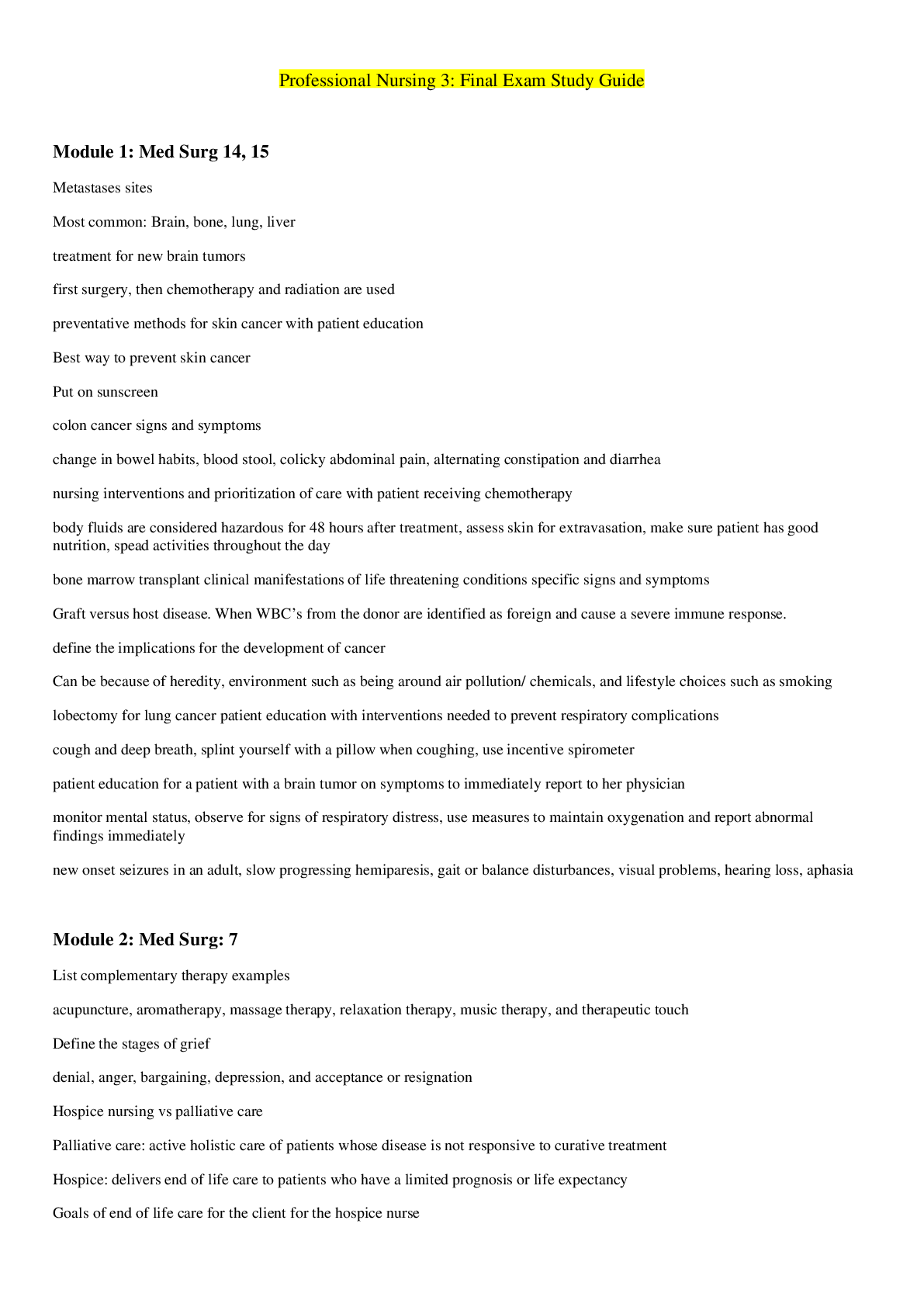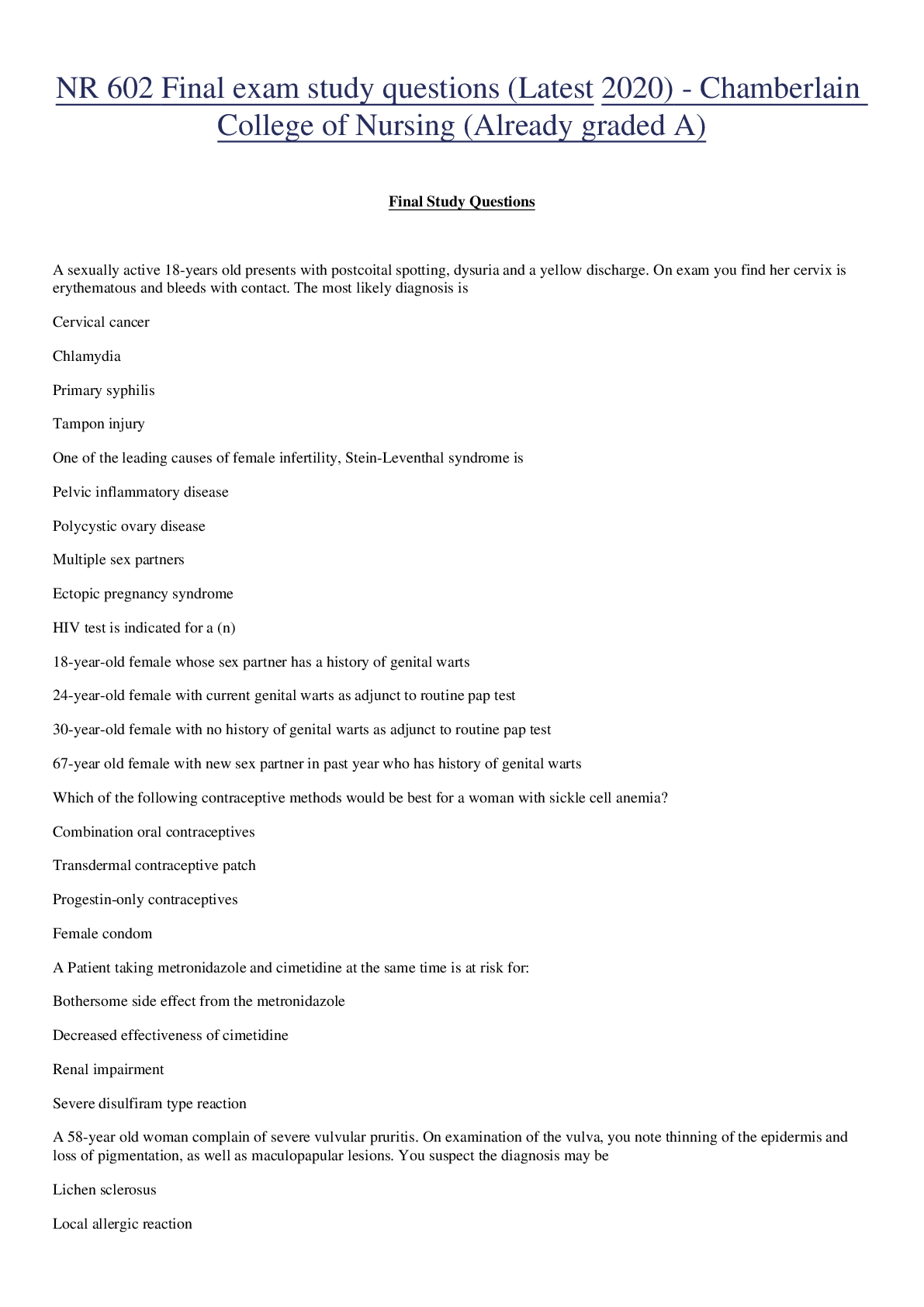Health Care > EXAM > HMX Immunology Final Exam Study Guide 2022 With Complete Solution (All)
HMX Immunology Final Exam Study Guide 2022 With Complete Solution
Document Content and Description Below
Tissue resident sentinel cells include (3 types) Correct Answer: Dendritic cells, macrophages, and mast cells Circulating leukocytes involved in innate response (2 types) Correct Answer: Monocyte... s and neutrophils Phagocytic immune cells (2 types) Correct Answer: Macrophages and neutrophils Difference between macrophages and neutrophils? Correct Answer: Neutrophils are short lived and will undergo apoptosis after eating a microbe; macrophages are longer-lived and will eat apoptotic cells and waste General cytokine role in innate immune response (and what cells release them?) Correct Answer: Released by dendritic cells, macrophages, and mast cells. Pro-inflammatory molecules that interact with blood vessel endothelium to recruit circulating leukocytes, fluid, and proteins into tissue Which tissue-resident sentinel cell will release histamine upon activation? Correct Answer: Mast cell Cytokines promote up-regulation of what kind of molecule within blood vessel walls? Correct Answer: Adhesion molecules E-Selectin Correct Answer: An adhesion molecule that helps to slow down circulating leukocytes in innate immune response (low-affinity interaction) E-Selectin Ligand Correct Answer: A ligand expressed by circulating leukocytes that helps them stick to blood vessel endothelium in innate immune response ICAM-1 Correct Answer: An adhesion molecule that helps circulating leukocytes bind to blood vessel endothelium in innate immune response (high-affinity interaction) Integrins (and the name of a specific one) Correct Answer: A class of adhesion molecules expressed on circulating leukocytes; LFA-1 binds to ICAM-1 in a high affinity interaction during the innate inflammatory response Stable Arrest Correct Answer: When a circulating leukocyte comes to a stop within the endothelium thanks to adhesion molecule interactions and can enter the tissue Pus Correct Answer: Comprised of fluid and apoptotic cells/waste as a result of an inflammatory response (DNA, dead bacteria, apoptotic neutrophils) Psoriasis overview Correct Answer: Autoimmune disease that can cause skin plaques and arthritis; Skin plaques are caused by immune cells migrating into the skin and initiating an inflammatory response [Show More]
Last updated: 2 years ago
Preview 1 out of 12 pages

Buy this document to get the full access instantly
Instant Download Access after purchase
Buy NowInstant download
We Accept:

Also available in bundle (1)

HMX Immunology TESTS COMPILATION BUNDLE
HMX Immunology TESTS COMPILATION BUNDLE
By Crum 2 years ago
$24.5
9
Reviews( 0 )
$12.00
Can't find what you want? Try our AI powered Search
Document information
Connected school, study & course
About the document
Uploaded On
Oct 18, 2022
Number of pages
12
Written in
Additional information
This document has been written for:
Uploaded
Oct 18, 2022
Downloads
0
Views
97


























